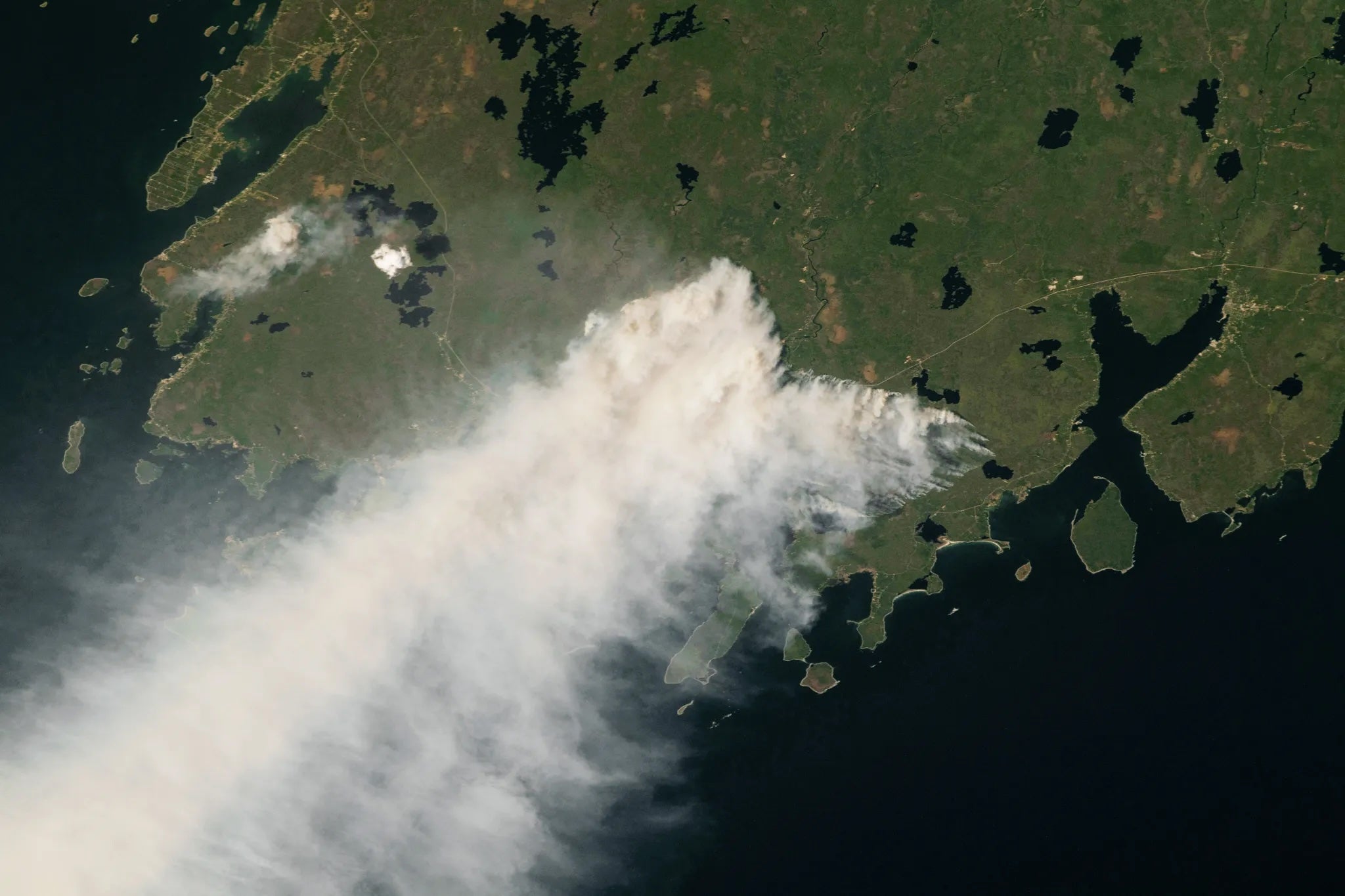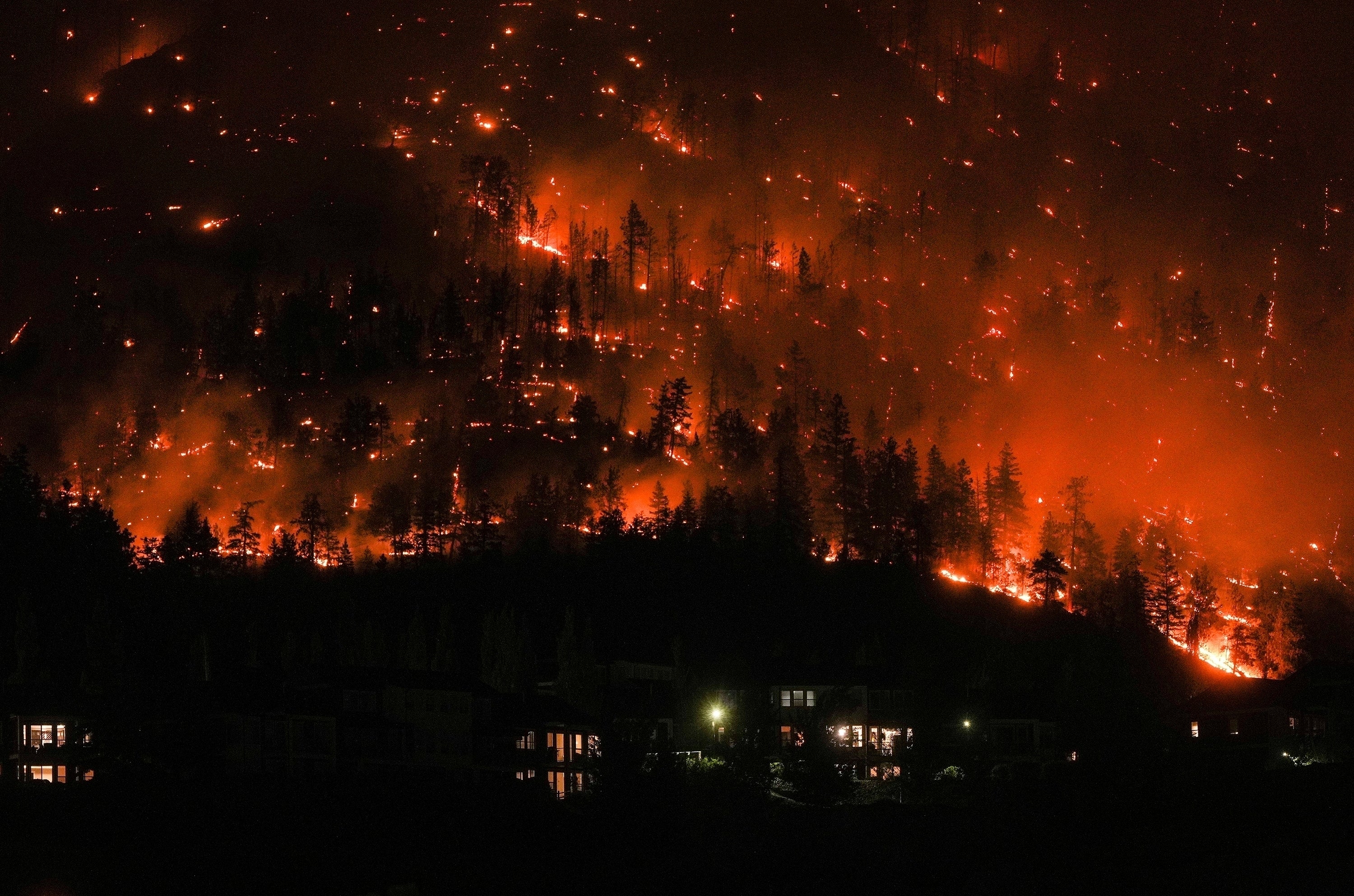Canada’s wildfires created more emissions than almost every country last year
Earth’s atmospheric greenhouse gas concentrations were at the highest levels in human history in 2023
Your support helps us to tell the story
From reproductive rights to climate change to Big Tech, The Independent is on the ground when the story is developing. Whether it's investigating the financials of Elon Musk's pro-Trump PAC or producing our latest documentary, 'The A Word', which shines a light on the American women fighting for reproductive rights, we know how important it is to parse out the facts from the messaging.
At such a critical moment in US history, we need reporters on the ground. Your donation allows us to keep sending journalists to speak to both sides of the story.
The Independent is trusted by Americans across the entire political spectrum. And unlike many other quality news outlets, we choose not to lock Americans out of our reporting and analysis with paywalls. We believe quality journalism should be available to everyone, paid for by those who can afford it.
Your support makes all the difference.The record-breaking wildfires that tore through Canada last year were responsible for sending more planet-heating carbon emissions into the atmosphere than almost every country on earth.
The fires – which burned an area roughly the same size as North Dakota – released about 640 million metric tons of carbon dioxide, according to a study published Wednesday by NASA’s Jet Propulsion Laboratory.
The study, published in the journal Nature, revealed that only China, the US and India produced more emissions from fossil fuels, than the Canadian fires. Earth’s atmospheric greenhouse gas concentrations were at the highest levels in human history in 2023.
“The 2023 fire season was the warmest and driest for Canadian forests since at least 1980, resulting in vast carbon emissions from forest fires,” the study said.
The fires erupted in May 2023 and raged for months across the provinces with record temperatures and dry conditions fuelling the flames.

The wildfires consumed more than 45 million acres, extending from British Columbia to Nova Scotia. Smoke billowed across Canada and reached south of the border where it turned skies an an ominous yellow-orange hue in US cities. Eight firefighters were killed and tens of thousands of people evacuated in Canada.
NASA determined the impact of the fires using satellite observations and supercomputers. In particular, a European Space Agency Instrument - the TROPOspheric Monitoring Instrument - which is attached to the Sentinel 5P satellite and has been orbiting Earth since 2017, was able to measure and map gas and fine particles in the atmosphere.

Wildfires are expected to increase in frequency and severity due to soaring temperatures and debilitating droughts linked to the climate crisis.
The threat to the world’s northern forests, including in Canada, are dire. These forests typically act as major carbon sinks - absorbing more CO2 from the atmosphere than they emit.
However, their effectiveness as carbon sinks are weakening, the National Oceanic and Atmospheric Administration has said.
Wildfires in Canada this year have already sent smoke to Midwest and East Coast skies. There are now 730 active fires burning, according to the Canadian Interagency Forest Fire Center. This year has seen nearly 12 million acres burned, including in Alberta’s iconic town of Jasper.
Fire activity has increased in August, with warmer and drier weather forecast for the Labor Day weekend. While wildfires occur year-round in Canada, the most active period is from May through September. The Canadian government said earlier this summer that projections indicate the wildfire risk is expected to remain high for the coming months.
The Independent will be revealing its Climate100 List in September and hosting an event in New York, which can be attended online.
Journalist and bestselling author of Fire Weather: A True Story from a Hotter World, John Vaillant, will be speaking at The Independent’s inaugural Climate100 event on 25 September. Register here to attend online.

Join our commenting forum
Join thought-provoking conversations, follow other Independent readers and see their replies
Comments